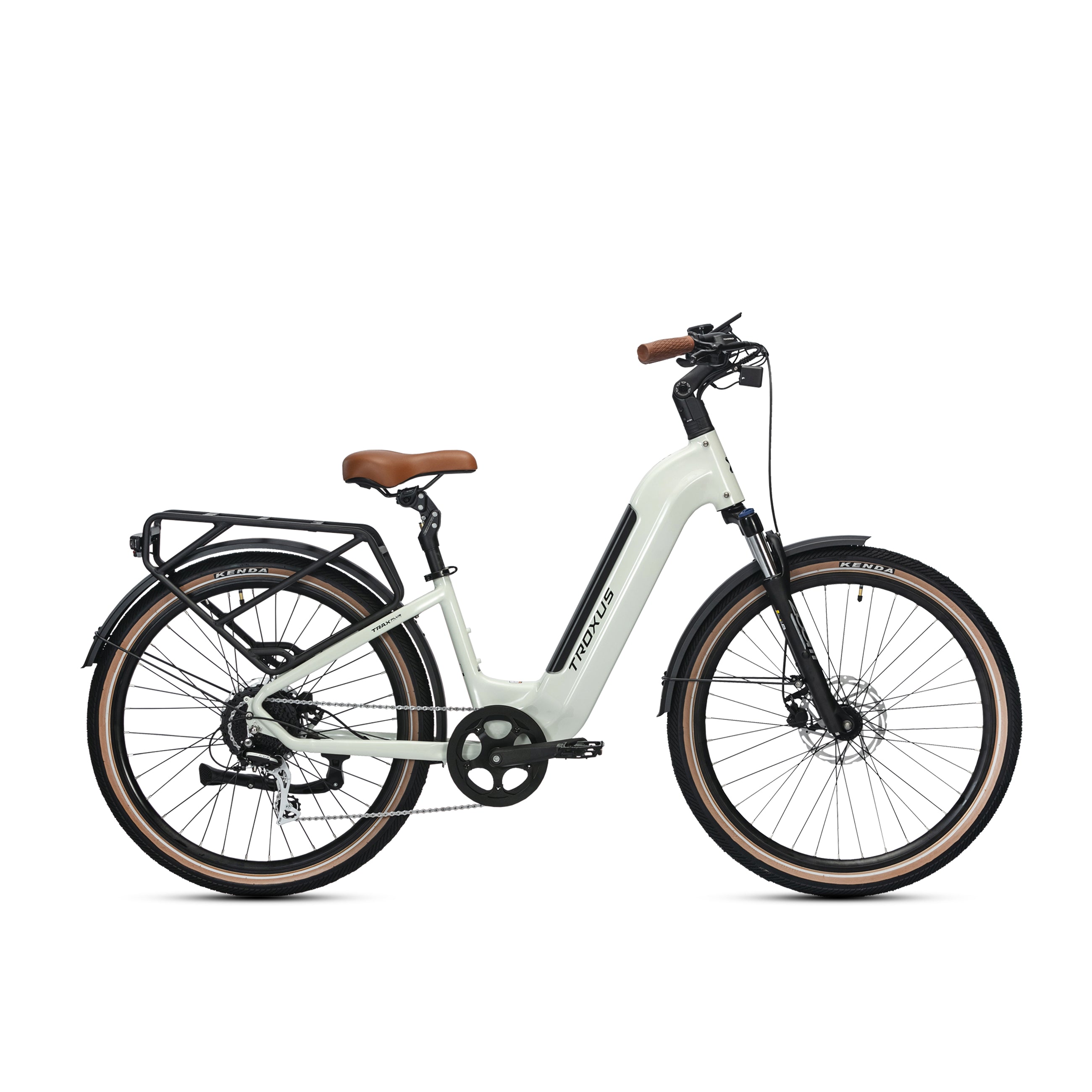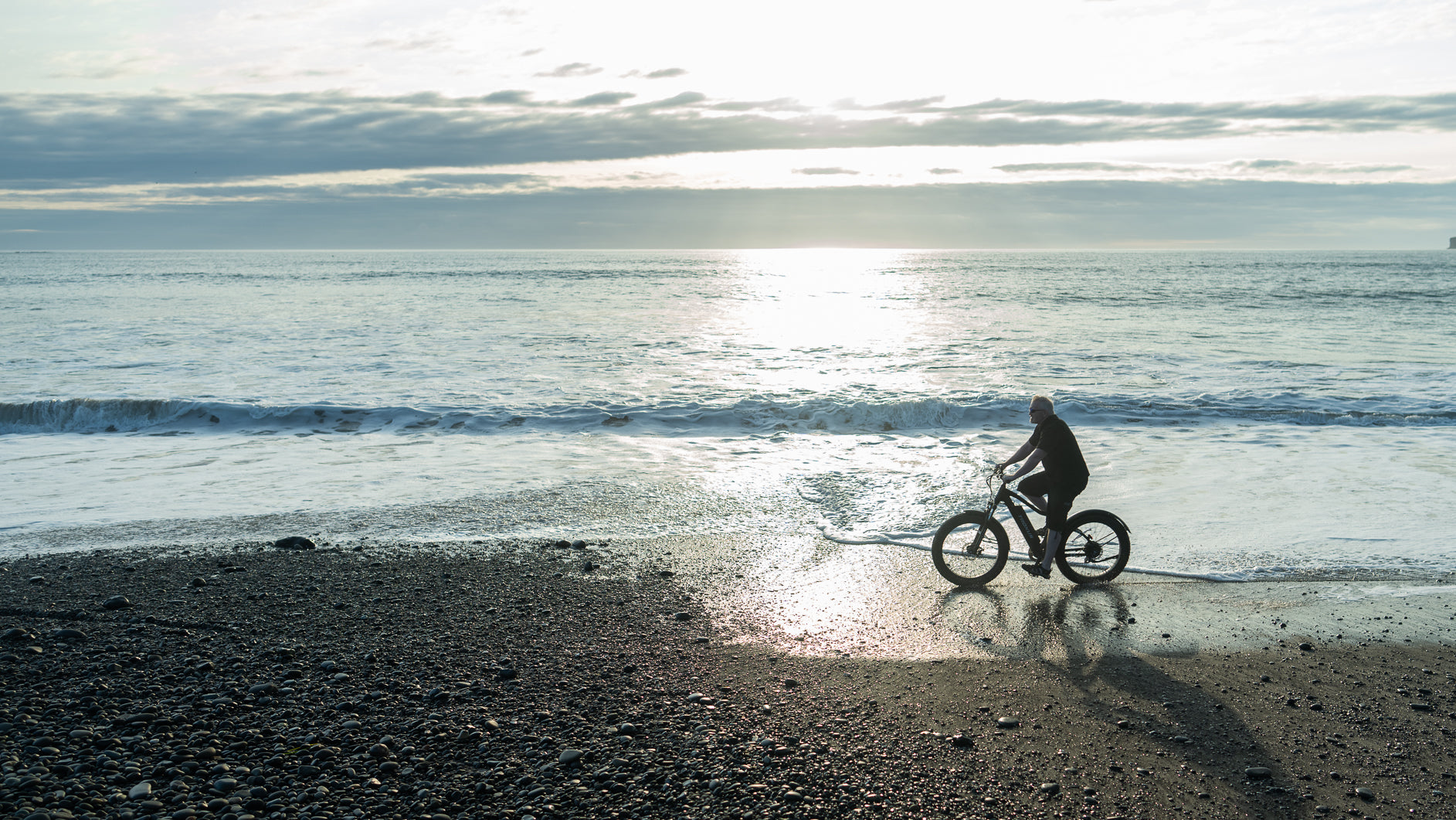Introduction
E-bikes have rapidly gained popularity, especially among commuters and cycling enthusiasts, due to their efficiency and eco-friendliness. Like any mode of transportation, weather conditions can significantly influence the riding experience, particularly in the rain.
Biking in the rain can feel daunting. Slick roads, gusty winds, and limited visibility make it less enjoyable than a sunny ride. Can you ride an e-bike in the rain? Absolutely! However, staying safe requires some precautions.
Riding an e-bike in the rain affects your safety and the safety of others. While it's usually best to steer clear of bad weather, sometimes you just have to face it. In those cases, following some handy tips can help you stay safe, dry, and enjoy your ride, no matter the weather. Understanding how to ride your e-bike safely and effectively in wet conditions can substantially enhance your daily commute or leisurely rides.
Content
Safety First: Riding in the Rain
Riding Techniques for Wet Weather
E-bike Maintenance for Wet Weather
Understanding Your E-bike
Riding an e-bike in the rain necessitates a solid grasp of its components and their performance under wet conditions to ensure safety and enjoyment.
Pick the Right Waterproof Level
Knowing the Ingress Protection (IP) code is key for e-bike riders, especially when it’s wet outside. Experts suggest not riding e-bikes with an IP rating below IPx4 in heavy rain to keep the electronics safe.
Check for Troxus ebikes that have an IPX5 rating.
One big DON'T: avoid riding through deep water. If you must, turn off your e-bike's electric system and walk it. Water can seriously damage your e-bike’s electronics, leading to expensive repairs.

Battery Life and Protection
The battery is one of the most critical components of your e-bike, and it's crucial to understand how wet conditions affect it. Most e-bike batteries feature waterproofing to protect against light rain and splashes. However, heavy rain can still pose risks, such as short circuits or reduced efficiency. Always secure your battery and consider a waterproof cover for added protection during heavy downpours or choose semi-intergrated or intergrated baterries instead.
Motor Performance in Wet Conditions
E-bike motors are generally built to withstand light to moderate rain, with sealed casings to prevent water ingress. However, riding through deep puddles or allowing water to penetrate the motor can cause damage and reduce performance. Avoid submerging your e-bike's motor in water and consult the manufacturer's guidelines on water resistance. Regular maintenance checks will ensure optimal functionality.
Tires and Traction on Slick Surfaces
Rain can make roads slick and challenging to navigate, increasing the risk of skidding. Ensure your e-bike tires have adequate tread to maintain traction on wet surfaces. Consider investing in tires specifically designed for wet weather, featuring deeper grooves and special rubber compounds for enhanced grip and safety.
Brake Condition
Wet conditions can impact your braking system, reducing effectiveness and increasing stopping distances. Regularly check your brakes to ensure they function properly, and consider upgrading to disc brakes if you haven't already, as they provide better performance in wet conditions compared to traditional rim brakes.
Waterproofing Electronics and Controls
While most e-bikes feature waterproof electronics, it's wise to double-check. Ensure all connectors, displays, and control panels are sealed to prevent water ingress. This precaution prevents malfunctions of critical systems while riding in the rain.
 |
Trax LT E-Bike
|
Safety First: Riding in the Rain
Riding an e-bike in the rain requires extra precautions for your safety and that of others on the road.
Maintaining Visibility
Seeing and being seen is super important in the rain, as reduced visibility can increase accident risk. Before heading out, check your lights. Good lighting lights up your path and makes sure vehicles and pedestrians see you. Troxus e-bikes have built-in quality lights that don’t need extra charging if the main battery is powered up. The taillights even double-flash when braking, making sure you’re visible to those behind you, especially when visibility is low. Equip your e-bike with front and rear lights, and consider adding reflective strips to your clothing and bike. Wearing bright or neon-colored clothing can also help you stand out to other road users.

Wearing a Helmet and Rain Gear
Never compromise on safety—always wear a helmet to protect yourself in case of falls or collisions. Additionally, invest in high-quality rain gear, including a waterproof jacket, pants, and gloves, to stay dry and comfortable, allowing you to focus on the road and maintain control. Waterproof or water-resistant clothing is crucial in rainy weather. A good rain jacket or poncho keeps you dry and comfy.
Waterproofing Accessories
Use waterproof bags and covers for your belongings and bike accessories to protect electronics like your phone or GPS. Keeping your items dry ensures a pleasant riding experience, even in wet conditions, and prevents damage to essential equipment.

Use Fenders
Fenders are a must when it's rainy. They attach to your wheels and stop mud, water, and debris from splashing on you, keeping you dry and reducing slip risks.
Most Troxus e-bikes come with fenders that handle the elements and are easy to clean, making them perfect for regular rainy rides. Investing in good fenders results in a smoother, safer, and more comfortable ride.

Lower the Tire Pressure
Adjusting tire pressure can really help in the rain. While the usual pressure is around 100 psi for smooth roads, dropping it to about 90 psi boosts grip on wet surfaces. Lower pressure increases the contact patch with the ground, giving better traction and a safer ride.
Preparing for Rainy Commutes
Planning a ride in the rain? Follow these tips to ensure you're well-prepared and can enjoy your journey regardless of the weather.
Checklist of Essentials
- Waterproof bags to shield your belongings from the rain.
- Spare clothes for a quick change if you get soaked.
- Rain gear, such as a jacket, pants, and gloves, to keep you dry and comfortable.
- Extra lights and batteries to maintain visibility in dim lighting.
- A small towel to dry off your bike and yourself after the ride.
Checking the Weather
Always review the weather forecast before setting out. This foresight allows for proper preparation and helps you avoid unexpected downpours that could disrupt your plans. If severe weather is predicted, consider rescheduling your ride or choosing an alternative route with better conditions.
I once embarked on a rainy commute without proper preparation, learning a tough lesson. My clothes and belongings were soaked, making the ride far from pleasant. Since then, I've made it a rule to never leave home without my waterproof gear and a quick weather check. Being well-prepared can significantly enhance your riding experience, no matter what Mother Nature brings.
Riding Techniques for Wet Weather
Riding an e-bike in the rain requires specific techniques to ensure safety and enjoyment. Wet conditions present unique challenges, making preparation and awareness essential for a successful ride.

Slowing Down and Avoiding Sudden Movements
Wet surfaces greatly reduce traction, necessitating a slower pace to maintain balance and control. Avoid sudden turns or abrupt stops, as these can lead to losing control of your e-bike. Approach curves and intersections cautiously, lean gently into turns, and allow extra time for safe navigation.
Braking Distances in the Rain
Rain increases braking distances due to decreased friction between tires and the road. For safety, begin braking earlier than usual. Apply both brakes gently and evenly to avoid skidding. Disc brakes offer more reliable stopping power in wet conditions, making them a worthwhile investment for rainy rides.
Navigating Puddles and Standing Water
Puddles can conceal hazards like potholes or debris. Avoid riding through large puddles whenever possible. If you must pass through water, do so slowly to maintain control and visibility. Keep a firm grip on the handlebars and be ready for unexpected bumps or changes in surface levels.
Dealing with Slippery Surfaces
Certain surfaces become extremely slippery when wet, such as metal grates, painted lines, and wooden bridges. These can be hazardous, so approach them slowly or avoid them altogether. Stay vigilant and ready to adjust your path to steer clear of these dangers.
Emergency Preparedness
Being prepared for unforeseen circumstances can greatly improve your rainy day experience. Always have a plan in case you get stranded. Carry a fully charged phone, some cash, and know the directions to the nearest shelter or café where you can wait out the worst of the weather. This preparation provides peace of mind and ensures you're not caught off guard.
After several rides in the rain, I've refined my riding style to be more cautious and aware. Slowing down, avoiding sudden movements, and being prepared have transformed my rainy commutes into much safer and more enjoyable adventures.
 |
Explorer Plus Step Over E-Bike |
E-bike Maintenance for Wet Weather
Proper upkeep is essential for extending the life of your e-bike and ensuring optimal performance in wet conditions. Regular maintenance can prevent costly repairs and enhance your riding experience.
Cleaning and Maintenance of Your E-bike
After riding in the rain, take the time to thoroughly clean your e-bike. Wipe down the frame to remove dirt and water spots, dry the battery and motor to prevent moisture damage, and clean the chain to avoid rust. Consistent care will keep your e-bike in prime condition, ensuring it's ready for your next ride.
The Importance of Battery Care
Rainwater can impact your battery's performance, potentially reducing efficiency or causing damage. Ensure the battery is thoroughly dried after each ride and store it in a dry place. Regularly check the battery terminals for signs of corrosion, which can affect connectivity and lifespan.
Personal Maintenance Routine
Through trial and error, I've developed an effective maintenance routine. After each rainy ride, I spend about 15 minutes cleaning and drying my e-bike. This small effort has yielded significant benefits, keeping my e-bike running smoothly and reliably.
Choosing the Right Route
Selecting the safest and most efficient route can greatly enhance your riding experience in the rain. Thoughtful route planning can significantly improve comfort and safety.
Suggestions for Safer Routes
Choose routes with less traffic and better road conditions. Bike paths and dedicated lanes are ideal, as they are typically safer and less congested. Familiarize yourself with these routes in advance to ensure a smoother ride.
Favorite Routes
I have a few preferred routes for rainy weather. These paths are not only less busy but also offer scenic views, making the ride enjoyable despite the rain. Exploring different routes can also provide a refreshing change of scenery.
Embracing the Experience
Riding an e-bike in the rain can be a unique and refreshing experience, offering unexpected joys and challenges.
Unique Aspects of Riding in the Rain
The sound of raindrops, the fresh smell of wet earth, and cooler temperatures can transform a rainy ride into a memorable journey. Plus, you'll often find fewer people on the road, giving you more space and freedom to ride comfortably.
Memorable Experiences
One of my most memorable rides was during a light drizzle. The streets were quiet, the air was fresh, and it felt as though I had the entire city to myself. This serene and peaceful experience is something I wouldn't trade for anything, reminding me of the joys of riding, even in less-than-ideal weather.
Encouragement to Ride
Don't let a little rain deter you. With the right preparation, mindset, and equipment, you can turn a potentially dreary day into an adventurous and fulfilling experience.
Conclusion
Riding an e-bike in the rain need not be daunting. With the right knowledge, preparation, and attitude, you can enjoy safe and enjoyable rides regardless of the weather. Remember to stay visible, ride cautiously, and maintain your e-bike for optimal performance in wet conditions. Now, it's your turn. Share your rainy riding experiences and tips in the comments below. Happy riding!








